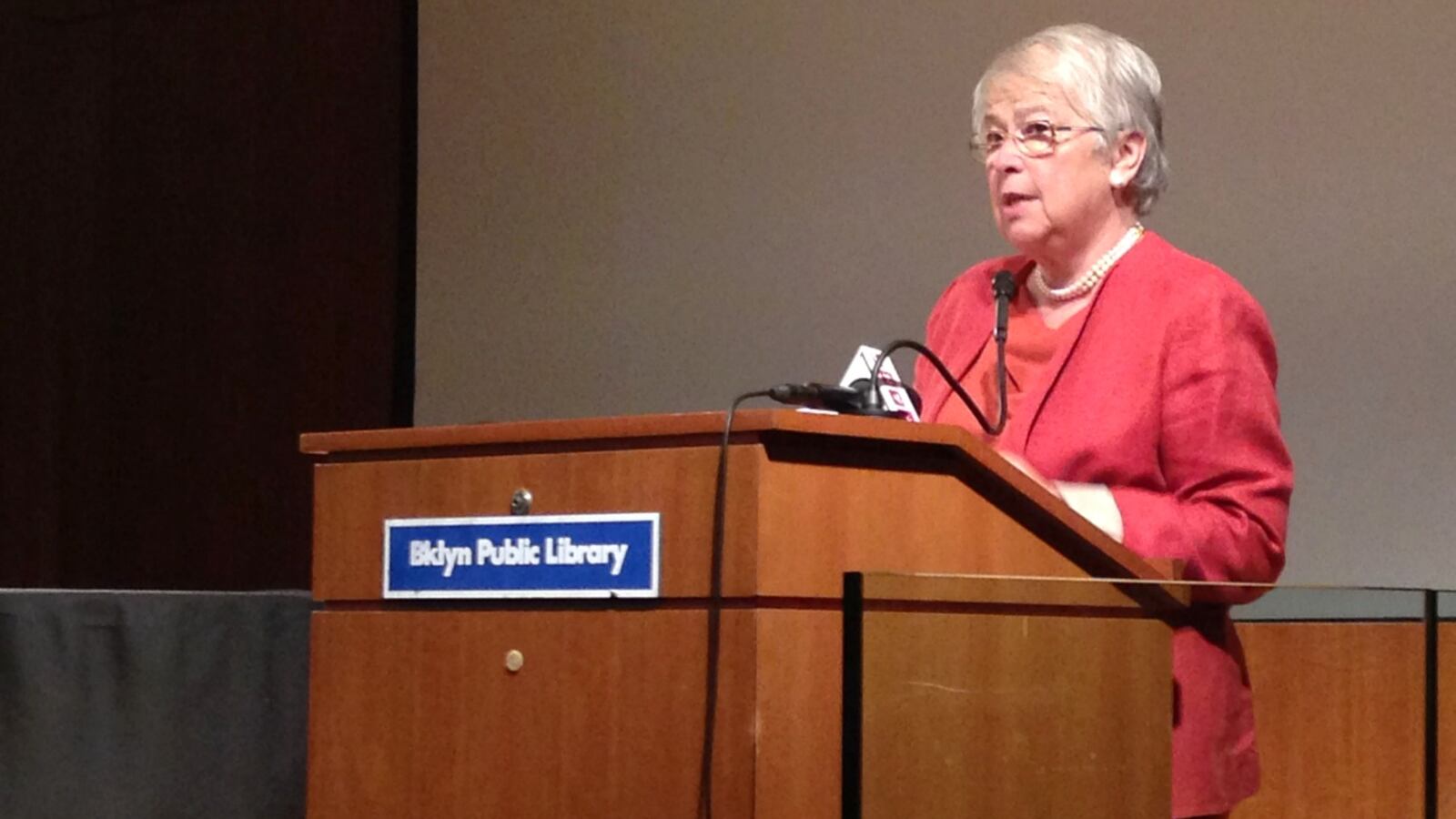If this was a history lesson about the current city school system, it might be titled, “The Future of Social Studies.”
Main events: A few years ago, when the state eliminated lower-grade social studies exams, and more recently when it started using students’ math and English test scores to evaluate teachers.
Also this April, when state policymakers adopted new social studies guidelines for the first time in 15 years, updating the information that students must learn and connecting it to the new Common Core standards. Those guidelines inspired new course maps that the city released Wednesday.
Big question: Will teachers embrace the new guidelines — which cover history, geography, economics, and government — even if younger students aren’t tested on them and the exams for older students won’t be updated for years?
Key figure: Chancellor Carmen Fariña, a champion of social studies who years ago created a curriculum based on that subject that was used citywide. Fariña gave her position on the big question Wednesday, saying that she expects to find students learning social studies at every school because “they need to learn this, not because there’s a fifth-grade test.”
“This is not something that’s going to be optional,” she added.
The state’s kindergarten-through-high-school guidelines, called the New York State Social Studies Framework, list the skills and information students should learn at every grade. The newly revamped guidelines add recent world events, condense and rearrange material, and put a Common Core-inspired emphasis on literacy and critical-thinking skills.
After the backlash over the rollout of the Common Core math and English standards, state officials have been careful to point out that the new social studies guidelines say what students should learn, but leave it to districts and schools to decide what materials and methods to use.
Still, the state has commissioned a group of teachers to create new model social studies units for every grade that will include guiding questions, key documents, and projects to test students’ understanding, said S.G. Grant, dean of the graduate education school at Binghamton University, who is helping lead the project. The units should be ready next June, he said.
Meanwhile, the city gathered about 40 teachers this summer to help update its social studies course outlines for kindergarten through eighth grade to match the new state framework. (City officials said high school outlines would come later.)
The outlines show what information students must learn at different points in the year. For example, the fourth-grade outline says students should study New York’s geography in September, its Native American groups in October, and its colonial period through December.
The teachers also started revamping the packages of classroom materials that go along with the outlines. They found new historical documents, added more writing exercises, and redesigned lessons so that students research and debate more and listen to lectures less, said teacher Jeanne Powers, who helped create the materials.
“It’s about giving them activities that deepen their understanding,” said Powers, who teaches second grade at P.S. 22 in Queens.
City officials said they expect to complete the materials tied to the first social studies units this fall (each grade covers four to seven units per year). A full year’s worth of materials will not be ready until next school year.
All the recent attention to social studies, however, follows a steady decline of its stature in schools.
First, the federal No Child Left Behind law required state tests in English, math and science, but not social studies. Then, New York got rid of its own middle-school social studies tests. Now, some social studies teachers are rated on how well their students do on the annual math and English exams.
The result is that schools reserve less time for non-tested subjects like social studies, while some social studies teachers feel forced to carve out part of their class time to prepare students for tested subjects like reading, teachers say. Some history can be covered during reading class, they add, but not as thoroughly as in history class.
By high school, students must pass two history exams to graduate, though policymakers have proposed letting students who pursue a special diploma skip one of those tests. Either way, those exams won’t be tied to the new social studies guidelines until 2018, leaving teachers with less of an incentive to switch to them right away.
“Whatever’s tested is what’s going to be taught,” said Nick Lawrence, who teaches eighth-grade social studies at the East Bronx Academy for the Future. “Even if there’s a huge push against that idea, that’s what the end result is.”
Fariña rejected that argument Wednesday, saying that social studies can train students to analyze and reason in ways that will help them on the state tests. Also, students will have a hard time passing their graduation exams if they have never taken social studies before high school, she said.
But, she suggested, the value of social studies outweighs concerns about test scores.
“We have to teach social studies because it’s the right thing to do,” she said.

